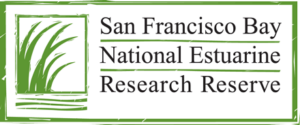Project overview
In California, an increasingly critical planning challenge is addressing how coastal flooding driven by high tides, storm events, and sea-level rise threatens low-lying roads and natural areas. Flooding affects multiple regional ecological, economical, and community dynamics, and can have particularly adverse impacts on frontline communities. Effects range from increased erosion and pollutant runoff into adjacent habitats, to limiting access to reserves and their programs, broader risks to local emergency services, disruption of nearby community travel to schools and workplaces, and slowdowns of commercial activities.
The Elkhorn Slough, San Francisco Bay, and Tijuana River Reserves are working together and leveraging their experiences to inform how they, their state partner agencies, other California coastal managers, and the whole NERRS can better engage in planning processes involving dual management concerns for flood-vulnerable roads and adjacent coastal habitats.
Research conducted
This project is in progress, but the team will plan to collaboratively develop case studies for each California reserve. Those case studies will then be integrated into a state-of-the-issue report that can later be distilled into short briefs to engage local and state decision-makers. Building on the insights from the report, the team will also host a workshop engaging key representatives from transportation agencies, coastal regulators, and local community groups in the Elkhorn Slough area to discuss findings from the case-study analysis and establish a framework for future discussions that combine road improvements and habitat restoration planning.
Findings
This study has been in progress since October 2021 and is expected to end in September 2023. You can read more about the project here.
Outcomes & impact
To ensure that the interests of these frontline communities are represented, there is a need for improved and environmental justice-informed coastal management practices that preserve coastal regions and the roads, habitats, and communities located within.




